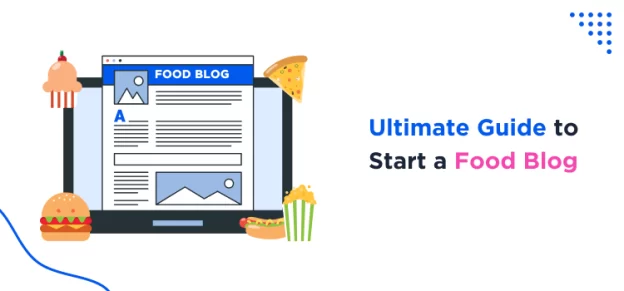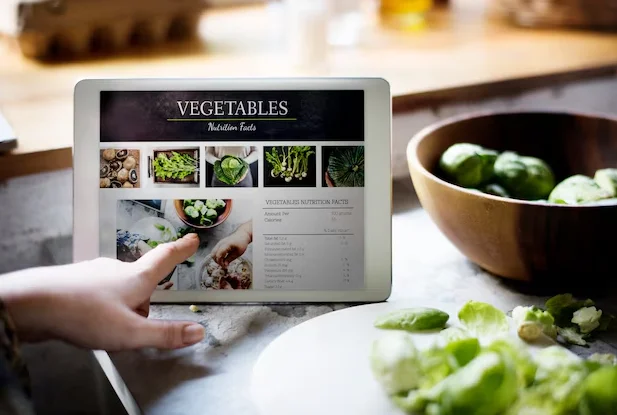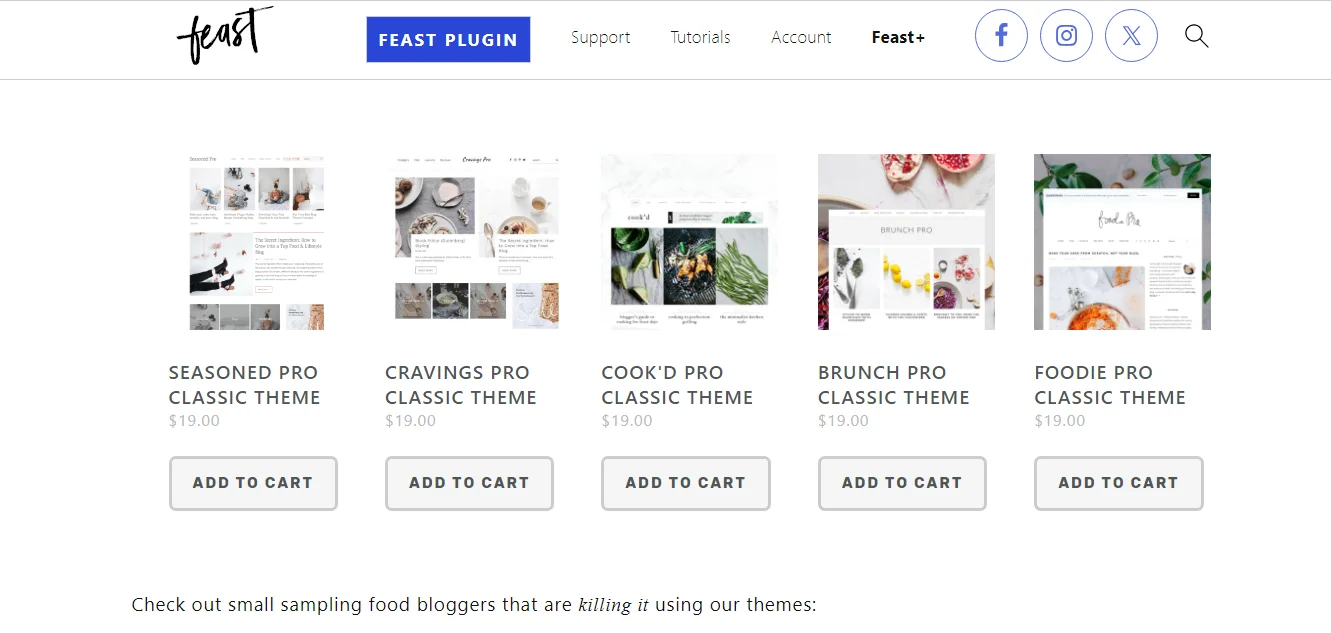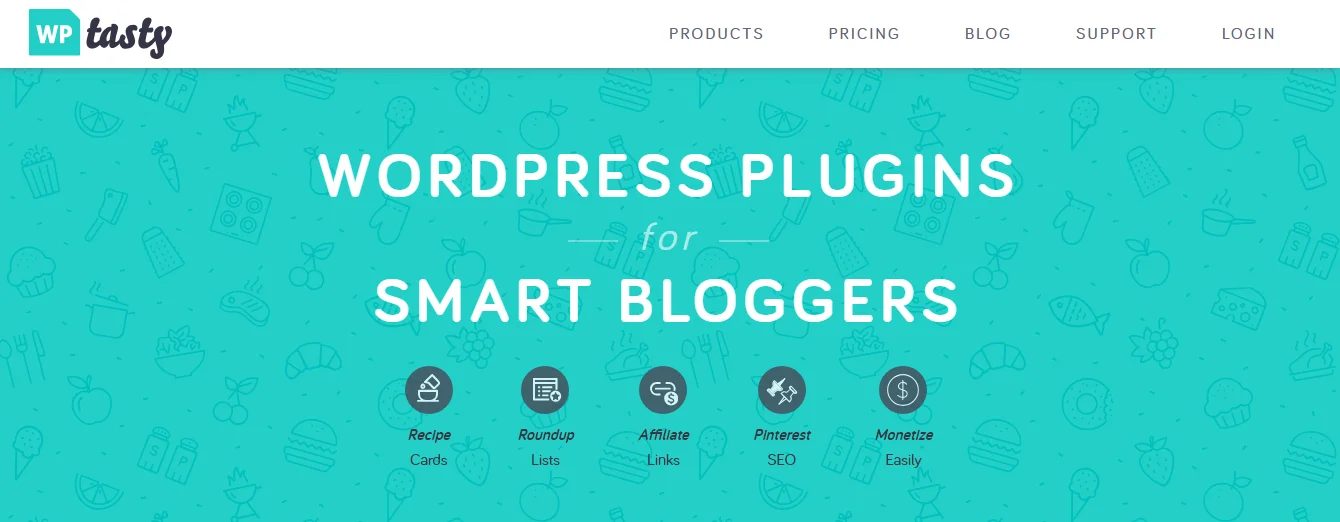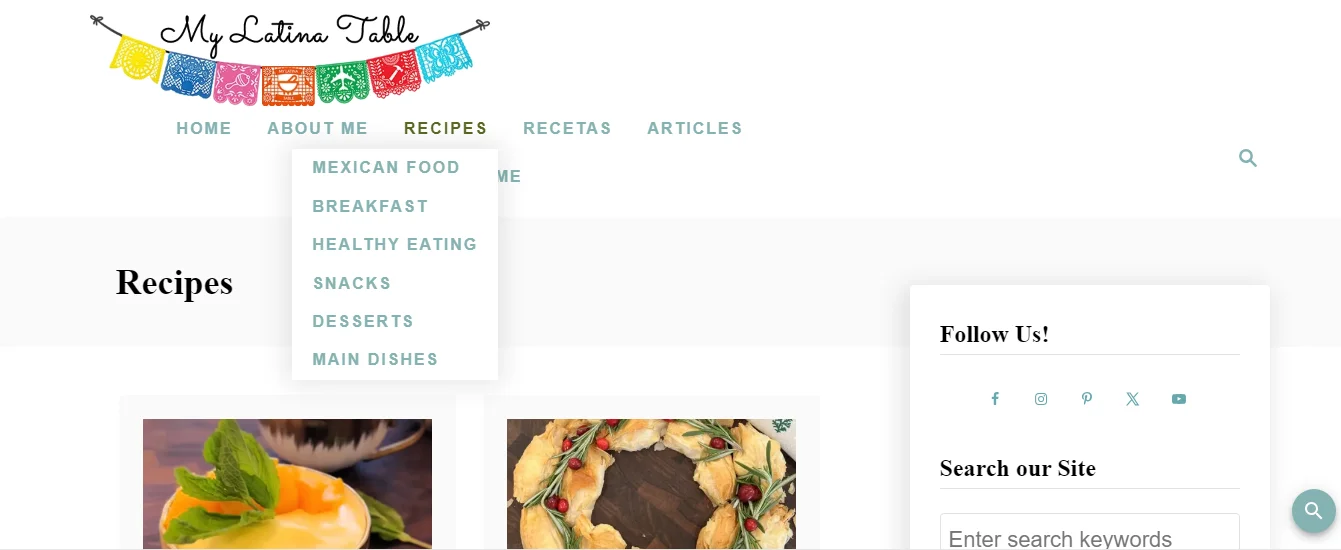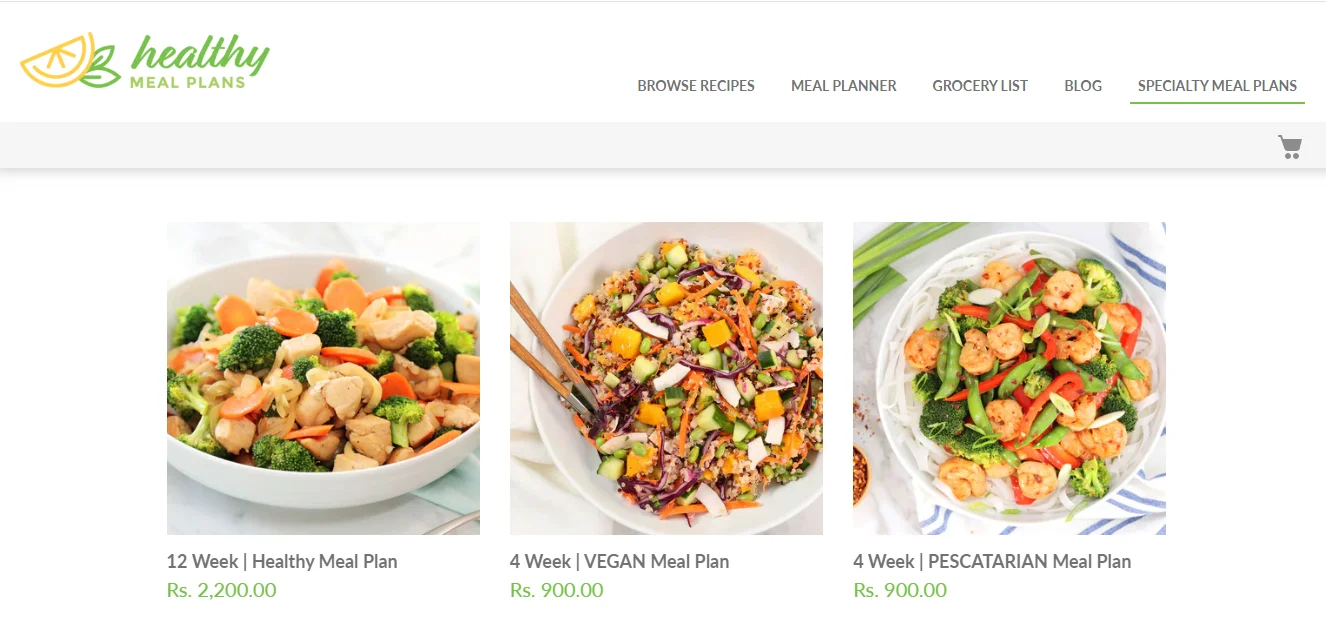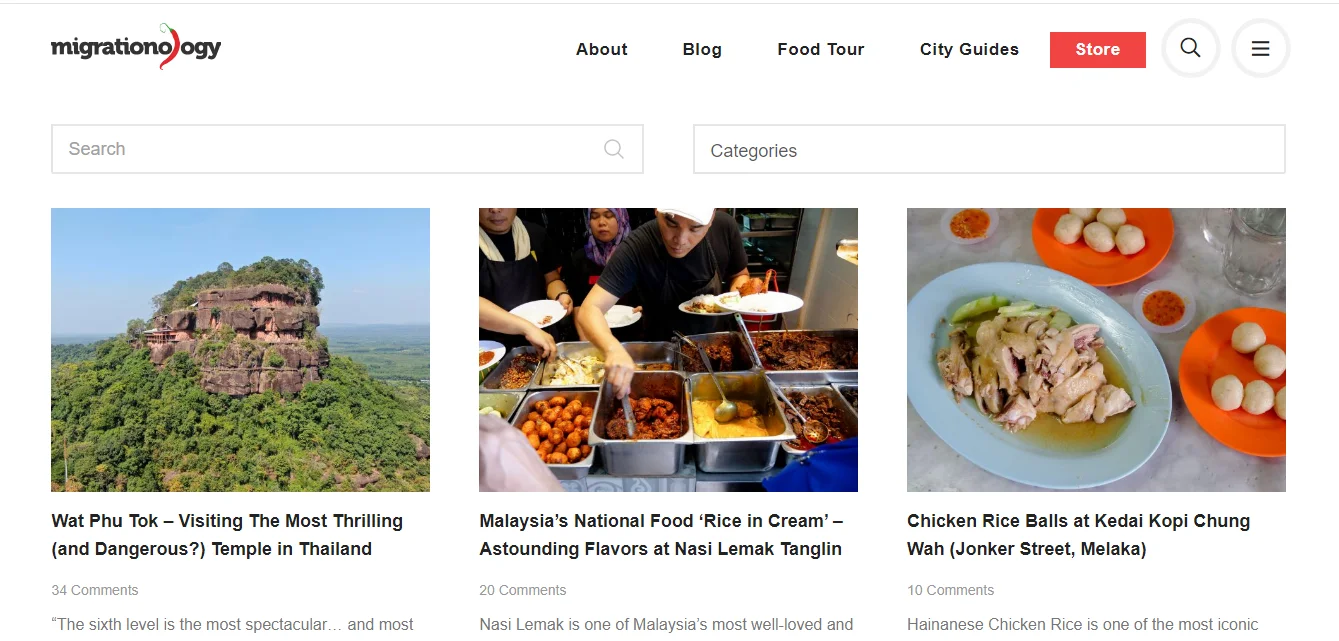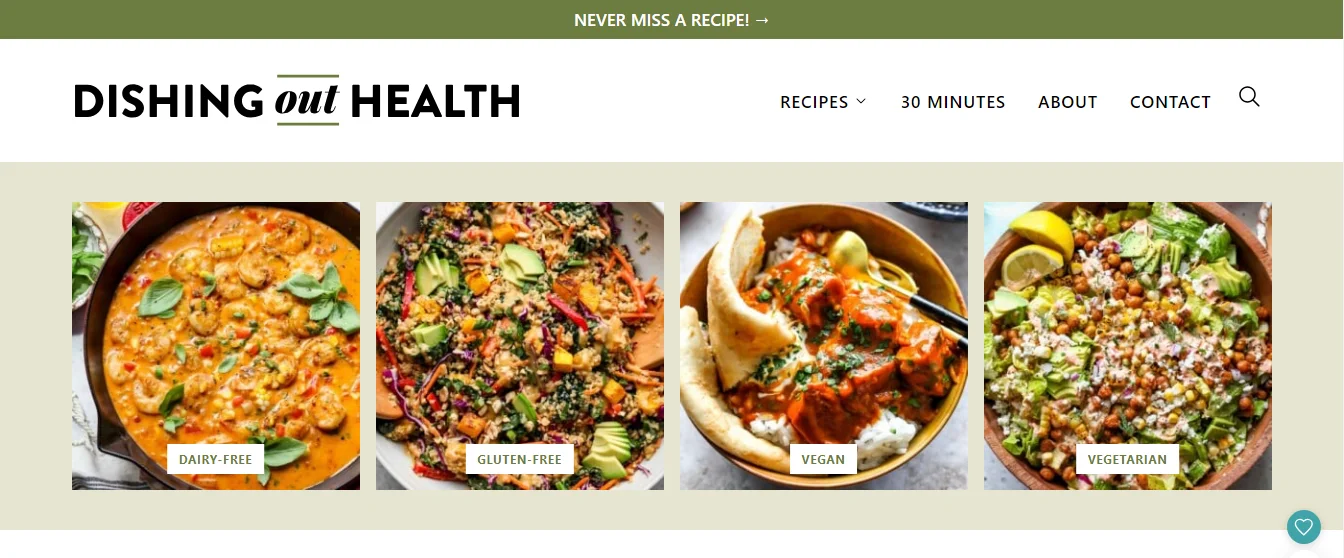The Recipe for a Perfect Food Blog: Tips for Getting Started
Blogging is still a thing as 77% of internet users still read blogs. You will be amazed to know that 73% of people trust food blogs for following a recipe. This can look like a saturated market but food is something that is a unique experience for everyone. Joey loved Rachel’s Thanksgiving Pudding while to Ross, it tasted like feet. It’s all about personal choices and perspectives sweetheart.😉
If you are passionate about food, have been deeply involved in understanding various cuisines, and find yourself as a cook at all your parties, why are you wasting your talent! Gather up all the courage for starting a food blog with a brand name that resembles your personality and website both.
You are not alone in this journey to ponder about various possibilities of creating a food blog. I shall take you along on a journey to actually plan out your Food Blog. From necessary technical (yet easy) requirements to brainstorming ideas about a niche, I am here to hold your hand throughout. Take out a pen and paper, you think the best when you are scribbling along, let’s go.
What is a Food Blog?
A food blog is like when you ask your Mom for cooking suggestions, but only without those playful taps on your cheek when you confuse sugar with salt! It’s where chefs-in-the-making share their culinary adventures, dish out recipes hotter than Gordon Ramsay’s burns, and help you make an insta-worthy dish.
A Food Blog can be diverse in itself and be niche specific. For instance, chocolate covered Katie’s main focus is on sharing recipes that involve chocolate. While some run a dedicated vegan food blog or share workout meals.
Now, before we start dishing up the ideas for your Food Recipe Blog, let us have a quick look into its basic requirements.
Basic Steps for Every Food Blog Website
You might get recipe ideas out of thin air, however, a blog cannot start like that. There are certain technical considerations that you need to look out for and think about. Don’t worry, it’s easier than making an Italian Meringue or a Mille Feuille. Let us look at it step-by-step.
Pinpoint your Niche for the Culinary Blogging
Well, as a cook, you can be moody and decide what to cook based on it. However, as a Food Blogger, this would not work. You will have to decide what you wish to offer to the audience and its format. Want some suggestions to get your creative head going? Here they are.
- Share your best cooking techniques in detail with pictures of each step
- If you’re great at meal planning, then share such weekly calendars along with a grocery shopping list and calculating food cost for the month
- Share Various Ingredients and how they are used, how they taste
- Share your knowledge of Food Science
- Delve into Cultural or Region Specific Cuisines
- Focus on Diet and Health Specific Recipes
- Sustainable Cooking Options
- Share food for housewarming party or suggest good road trip snacks on your food blog website
These are just some of the suggestions for starters. You must make sure that you are deeply interested in the niche that you choose. A niche that you have ample love and knowledge for and would want to keep exploring is your best bet for a long-term, sustainable food blog.
Domain Name and Host Platform for the Blog
Just as you require a name and space to build your home, you require a domain name and a hosting provider to locate your Blogging Website on the vast expanse of Search Engine. There are 600 million blogs Worldwide, all having their own space among 1.9 Billion Websites.
Multiple hosting providers also help with securing a domain name, free or charged. Explore platforms like Bluehost, Siteground, HostGator, GoDaddy, DreamHost, or A2 Hosting. The charges are very minimal starting from as low as $2 to $3 per month. Explore the features and support services of each platform before deciding.
A Blogging Software to Get Your Food Recipes Going
Can you function without your kitchen toolbox? Cook without pots, pans, and utensils? Similarly, you need blogging software to create, manage, and share your delicious recipes with photos and videos. A Blogging Software is a platform for you to write recipes, upload mouth-watering pictures, and design how your online creative kitchen would look like.
Tech Whiz or not, a right blogging software will make your plating of content easier, faster, and smoother. WordPress is the second most popular platform for blogging after Tumblr. WordPress is a great fit for you as you can get multiple free and paid themes and plugins to support your food blog.
Other options to explore include Wix, Weebly, Squarespace, Medium.
Themes and Plug-ins that support your Recipe Blog
Themes and Plug-ins are the ingredients that would run the show for your food blog.
A theme is like an outfit you choose to look impeccable and reflect your style. A theme will build the look and feel of your blog. Design, layout, menu, fonts, colors, all will be decided by the theme you choose, Thus, you must explore themes and choose the one which gives proper support and fits your scalability goals in future.
Plugins are the special tools like a Microwave, Airfryer, or a Griller. They provide specific functionalities and make a drastic change in the output. Plugins are specifically designed to add extra functionality to your Website. That can also define how you position your brand name. Here is a list of a few Plugins with their functionality.
- WP Recipe Maker will help you create gorgeous recipe cards for a better outlook of your Blog. However, if your theme already supports that, best.
- Yoast SEO helps you with optimizing blogs for aiming at a higher search engine rank. Explore other such SEO Plugins and get a basic idea about how SEO affects your blog.
- Social Warfare to add social media sharing buttons on your blogs for better reach and accessibility to the audience.
- BookingPress Plugin for you to take one-on-one sessions or expand your blog to provide classes.
- ARMember to convert your blog to a membership website and provide members only access to certain content. This helps you in attracting exclusive members who are genuinely interested in reading your content and this model will also help set up a consistent flow of income.
- A Plugin like ShortPixel becomes important as a food blog heavily depends on high-quality images. This kind of plug-in ensures that your images are not hindering the loading speed of your Website. A loading speed is an important optimization feature.
Various Types of Food Blogging Website Ideas
Now that you are aware of the technical requirements to consider for launching your Food-based blogging website, let us look at some ideas that you can consider. You must select a main form of Content for which you wish to be known among the readers. Further, you can diversify accordingly based on user comments. However, initially, establish yourself as a niche-specific creator.
1) Sharing Detailed Recipes
Not everyone has enough time to look at long YouTube videos. Sometimes they just want to read through a recipe to understand what they have to do. Prepare detailed recipes by giving an Index in the beginning, Ingredient list, and quantities, for how many people is this quantity sufficient so that they can increase or decrease as per requirement, steps, and estimated time.
You can even create cooking blogs to share special family recipes and dishes with their stories.
2) Various Cooking Techniques
Herein, you can focus just on specific preparation techniques and kitchen hacks. You can explain complex cooking techniques like sous vide, meringue, fermentation, or tempering chocolate. You can also cover topics like how to handle a knife, what are various types of knives and when they should be used, how to set up a table, how to do plating, how to use an air fryer effectively, and so on.
3) Cultural and Local Cuisines
Are you an expert in making a specific cuisine like Japanese, Italian, Mexican, or Indian? Then that can be your niche. Focus on how certain communities or certain regions cook several dishes and what are their specialties. You can even discuss the history and cultural significance of any dish. Look at this blog My Latina Table for ideas and inspiration.
4) Meal Planning and Grocery Shopping
Mom’s, Dad’s, and Adults around the globe are tired of deciding what to cook every day and what to pack in tiffin boxes for them and their children. It would be a boon for them to have someone provide meal planning cards every month or every week and provide a grocery list along with them. This would save up a lot of unnecessary spending and waste of food.
You can convert this idea into a membership website. Everyone who wants detailed meal plans and such shopping lists become a member on your Website for a recurring monthly or yearly fee. If they like what you provide, you have a stable monetization right there! Look at the Website of Healthy Meal Plans. They provide a feature to create personalized meal plans from the recipes they have uploaded and even sell their own meal plans. Such a nice set-up.
5) Foodie Traveller
This is one of my favorite types of Food Blog. If you love traveling and exploring various cuisines, this is for you. Initially, whenever you travel to different cities, try their specialty and local foods. Explore local places and talk to people about their culinary practices. You can easily work out 10-12 blogs from a single trip bifurcated into restaurants, local cafes, fine-dining experiences, in conversations with local chefs, in conversations with local people, sharing cultural secrets and preserved practices.
Once your blog has enough traffic and a genuine following, you can get sponsorships and invitations to travel and talk about the food of a specific region. Check Migrationology or the Travel Bite.
6) Mixing Food with Health
Managing food and health is a tricky dance. In the era where so many people are becoming health conscious, starting a food blog around healthy, gut-friendly recipes is a goldmine idea. Share vegan blogs, healthy travel snacks, tips on eating healthy at a restaurant, a list of keto diet nuts and how to consume them, fulfilling protein needs, or recommend kitchen appliances like an easy-clean slow juicer for those focused on gut-friendly nutrition and whole food habits.
Dishing Out Health is one such food blog that focuses on healthy recipes. Its name clearly suggests what it focuses on. Isn’t it amazing!
Apart from these, there are so many ideas that can set you apart from the crowd. Share personal stories with food and everyday struggles to feed the kids, be a quick eats kind of recipe blogger wherein you share quick and filling recipes, be a tiffin special blogger to share recipes that are perfect for corporate adults, share healthy recipes, share party recipes for people who are always confused what to cater.
Even if you are a restaurant owner, you can start a dedicated restaurant blog to help fellow restaurateurs sustain in the field.
You have your diamond idea, now how to monetize it?
Monetizing Your Food Blog
The greater question is how to earn money from a Website. Well, before you start monetizing, you must have good enough content on your Website. However, register yourself with Google Adsense or Mediavine to display ads on your blogs. Other monetizing ideas that would be applicable in the long run are listed below.
- Sell Digital Products: Create your e-books, recipe cards, meal plans, online courses, or any such downloadable content to sell.
- Create a Membership Website: Making a membership website is the best idea to monetize your food blog. Your blog must have enough free content for users to understand what you provide and a clear list of your membership offerings to entice them.
- Sponsored Content: It will take some time for you to build your credibility. Once you feel you have good enough traction, reach out to food brands, restaurants, and cafes for sponsored content. Provide genuine reviews and suggestions.
- Be a Reviewer: Keep track of all the new cooking-related products in the market and be a one-point contact for understanding them and getting reviews. You can collaborate with such brands to promote their products.
- Become an Affiliate: You can be an Amazon Affiliate by linking products on your blog and earning a commission whenever someone purchases from your link.
Once you start getting a hang of managing a food blog, you will explore your ideas to monetize it. Just take this leap of faith and dip your fingers in your passion!
Famous Cooking Blogs for Inspiration
Here is a list of the best food blogs that you should explore to understand the arena of Food Blogging
- 101 Cookbooks
- Grandbaby Cakes
- Half Baked Harvest Cookbooks
- No Meat Athlete
- Minimalist Baker
- Fuelled Naturally
Cleaning Up the Plate
Creating a mouth-watering food blog is not just about the recipes you share. It is about how you utilize various tools, themes, plug-ins, and monetization techniques to scale your blogging business. Choose a passionate niche and employ email marketing and digital marketing techniques for more and more conversions to your Website.
The process can be lengthy, but a flavourful lasagna takes its time to bake perfectly and melt in your mouth.
FAQs
1) Can I add videos to my Food Blog?
You can definitely add videos if your theme supports multimedia content. You will get the Add Media option while drafting your Blog.
2) Can I change themes and plugins afterward?
Definitely! If you think the current themes and plug-ins do not support your future plans, change them. You can rebrand yourself with a new look if required.
3) How can I diversify my Food Blog?
Once you feel you’ve set a strong foot in your niche, you can diversify with related topics. Add category cards on your Website or expand your menu to diversify your food blog. You can even diversify by separating membership categories for different niches.
4) Can I make a food Blog for Desserts and Cakes only?
Why not! If desserts and cakes are something you’re passionate about, spread that sweetness. Even in desserts, you can provide a subcategory of healthy, sugar-free desserts.
5) Can I launch an online course to teach cooking and recipes?
Yeah, bingo! Use ARMember Membership Plugin or LMS Tool like LearnDash to design an online culinary course. This can be an added monetization tool for you.
Also read:
